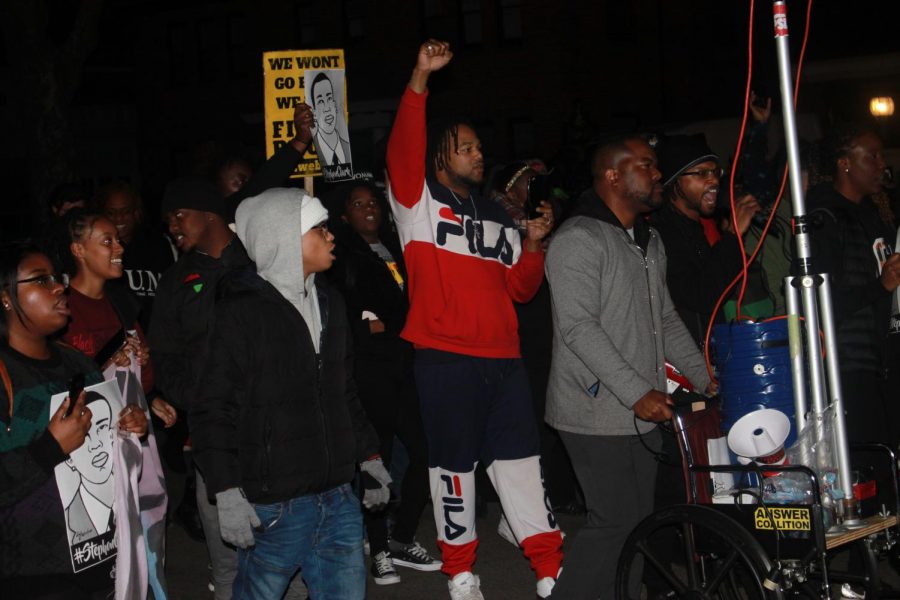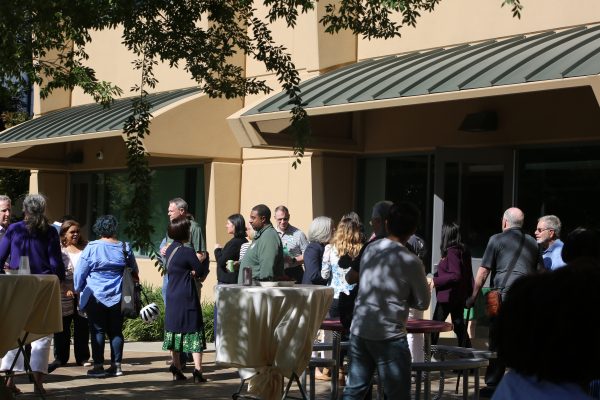California assembly bill may change when police can use deadly force
AB 392 was introduced in February and has since been a focal point of protests
Will Coburn - The State Hornet
Protesters marched through Sacramento’s Fab 40’s neighborhood, a collection of upscale homes. The protest was organized in response in the Sacramento District Attorney’s decision not to charge the officers involved in the fatal shooting of unarmed 22-year-old Stephon Clark.
A bill that would more narrowly define when police officers may legally use deadly force is currently making its way through the California assembly.
Assembly Bill 392 would change the use of deadly force by adding the word “necessary” into the language of when homicide is justifiable. Assemblymembers Shirley Weber, D-San Diego, and Kevin McCarty, D-Sacramento, introduced the bill in February.
AB 392 has been chanted at protests following Sacramento County District Attorney Anne Marie Schubert’s announcement of the decision not to press charges against the officers who killed Stephon Clark.
Related: ‘Stand up, fight back’: Sacramento reacts to Stephon Clark decision
The first time “necessary” appears is in paragraph four of subdivision A, which details how Penal Code 196 would be amended.
(4) When, subject to subdivision (b), (c), the officer reasonably believes, based on the totality of the circumstances, that the use of force resulting in a homicide is necessary to prevent the escape of a person…”
(A) The peace officer reasonably believes that the person has committed, or has attempted to commit, a felony involving the use or threatened use of deadly force.
(B) The peace officer reasonably believes that the person will cause death or inflict serious bodily injury to another unless immediately apprehended.
— California Assembly Bill 392
Sac State criminal justice professor Ryan Getty researches officer-involved shootings, training and use of force.
Before two Supreme Court cases in the 1980s, the use of deadly force had few restrictions.
“It was pretty much if an officer told a subject to stop, and they didn’t stop, (the officers) could shoot them,” Getty said.
In 1985, after Tennessee v. Garner, the “fleeing felon rule” was established. An officer could not shoot unless they had probable cause to believe the person was a significant threat of death.
Then in 1989, Graham v. Connor set forth the reasonableness standard about when to use excessive force.
Getty, who has over 25 years of law enforcement experience, explained that police departments implement policy based on the Supreme Court cases.
Police departments sometimes “try and push the blame onto the officer and claim immunity (because) they have policies,” Getty said.
There is also a competing bill in the California Senate introduced by Senator Anna Caballero, D-Salinas, SB 230. This bill would require law enforcement agencies to “maintain a policy that provides guidelines” on use of force and other tactics. It would also align California’s laws with the standard set forth in the Supreme Court cases.
Joe Kocurek, spokesperson for Weber, said AB 392 “changes the current standard” for when deadly force is permissible.
“The higher standard is authorizing the use of force only when necessary to defend against an imminent threat of death or serious bodily injury to an officer or somebody else,” Kocurek said in an email.
Kocurek said there is nothing in the Supreme Court case rulings that preclude the assembly from raising the standard.
“San Francisco has done it,” said Kocurek. “(The) additional guidelines are consistent with the ruling.”
Kocurek also said that while the criminal standards are set out in the changes to section 196 of the Penal Code, “police have the same right to self-defense as every Californian.”
Another subdivision adds that the amended Penal Code would not provide the peace officer with a defense to manslaughter “if that person was killed due to the criminally negligent conduct of the officer.”
This means that the Penal Code will not protect an officer from manslaughter charges if it is found that the officer failed to use reasonable care to ensure a death could have been avoided.
AB 392 would also amend Section 835a of the Penal Code, but would not affect any criminal standards of 835a because of a specific paragraph in the subdivision:
(4) This subdivision does not provide the legal standard and shall not be used in any criminal proceeding against a peace officer relating to the use of force by that peace officer
— California Penal Code Section 835a
“This provision makes clear that the standards set out in 835a affect only civil and administrative (disciplinary) standards,” Kocurek said in an email.
A bill hearing for AB 392 on April 9 brought many attendees sharing stories explaining their stance on the bill. Currently, the bill is in the Committee on Rules after passing the Committee on Public Safety with a 6-2 vote on April 10.
Your donation will support the student journalists of Sacramento State University. Your contribution will allow us to purchase equipment and cover our annual website hosting costs.




































































































































